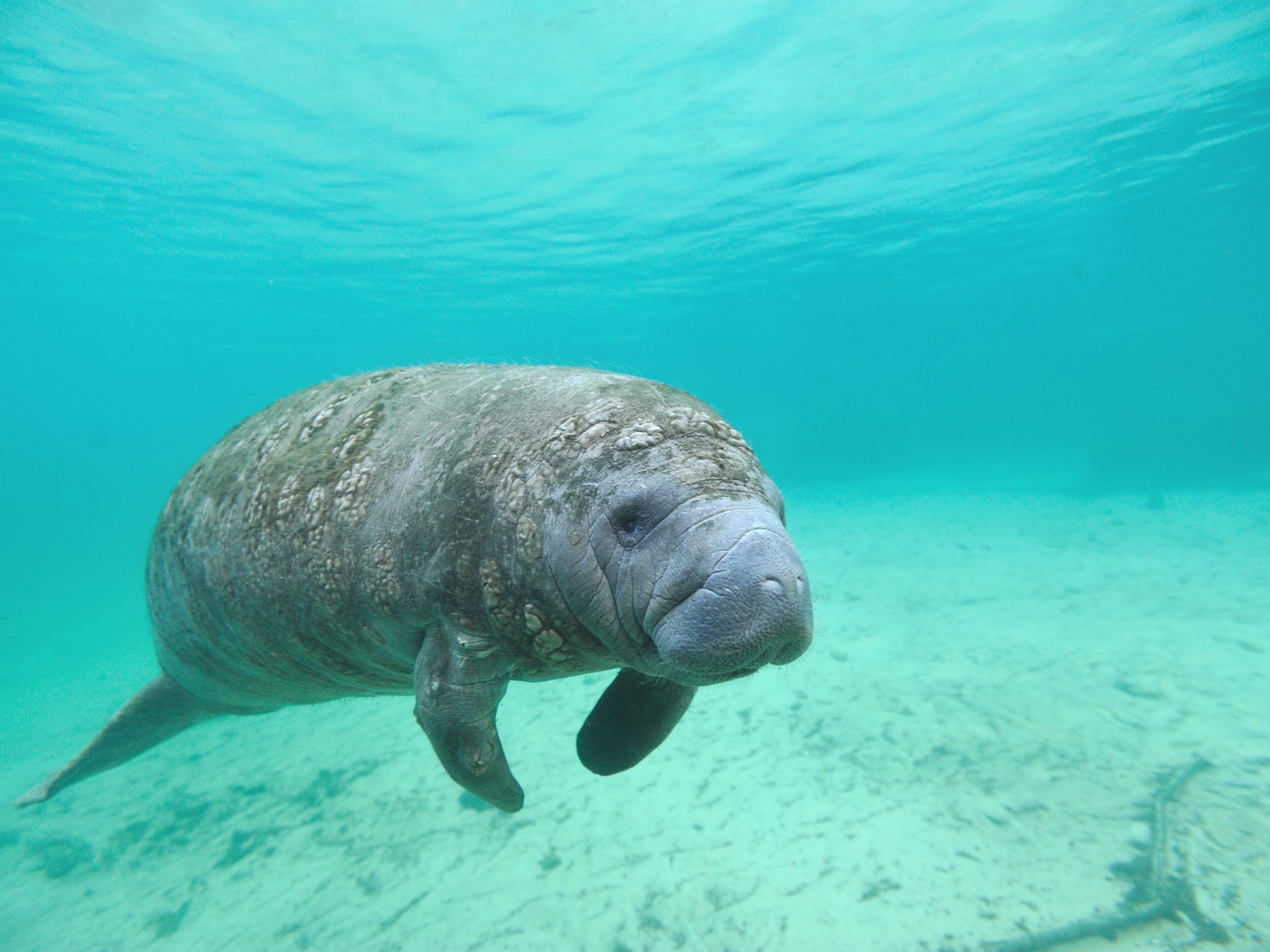Toxic ‘red tide’ in Florida causes spike in manatee deaths
Bloom of algae has killed nearly 100 sea cows so far this year

Your support helps us to tell the story
From reproductive rights to climate change to Big Tech, The Independent is on the ground when the story is developing. Whether it's investigating the financials of Elon Musk's pro-Trump PAC or producing our latest documentary, 'The A Word', which shines a light on the American women fighting for reproductive rights, we know how important it is to parse out the facts from the messaging.
At such a critical moment in US history, we need reporters on the ground. Your donation allows us to keep sending journalists to speak to both sides of the story.
The Independent is trusted by Americans across the entire political spectrum. And unlike many other quality news outlets, we choose not to lock Americans out of our reporting and analysis with paywalls. We believe quality journalism should be available to everyone, paid for by those who can afford it.
Your support makes all the difference.Manatee deaths have shot up this year as a toxic tide of red algae continues to sweep the Gulf of Mexico.
More of these aquatic mammals, also known as sea cows, have died so far in 2018 than in the whole of 2017.
Experts have blamed a combination of the cold snap at the beginning of the year and the red tide that has struck Florida this summer.
“We expect the red tide-related manatee death toll to rise,” Jeff Ruch, executive director for NGO Public Employees for Environmental Responsibility, told AP.
“We suspect there are a number of carcasses that have not been reported yet.”
Figures from the Florida Fish and Wildlife Conservation Commission suggest the red tide is to blame for nearly 100 manatee deaths so far.
The phenomenon is the result of nutrients in the water causing a bloom in algae called dinoflagellates.
Though algal blooms are natural occurrences, experts say they have been exacerbated by changes to land and waterways near the ocean, as well as associated agricultural runoff.
Beaches in Florida have been choked with tonnes of dead fish and other sea life that has been poisoned by the algae.
Local communities are also suffering, and hospitals have seen a 50 per cent increase in hospital visits due to respiratory conditions as a result of breathing in toxins from the blooms.
Conservationist Marilyn Levy Odea said manatees are affected because they breathe in the algae’s toxins, as well as absorbing them through their skin and consuming them in the plants they eat.
As they are slow moving creatures, manatees may also be less able to escape the red tide as it spreads across the region.
Florida is home to around 6,000 manatees in total, and they are considered a threatened species.
Besides toxic algae and loss of habitat as humans encroach on their favoured haunts, manatees are also at risk of watercraft collision as propellers and boat hulls can inflict devastating injuries on them.
Join our commenting forum
Join thought-provoking conversations, follow other Independent readers and see their replies
Comments